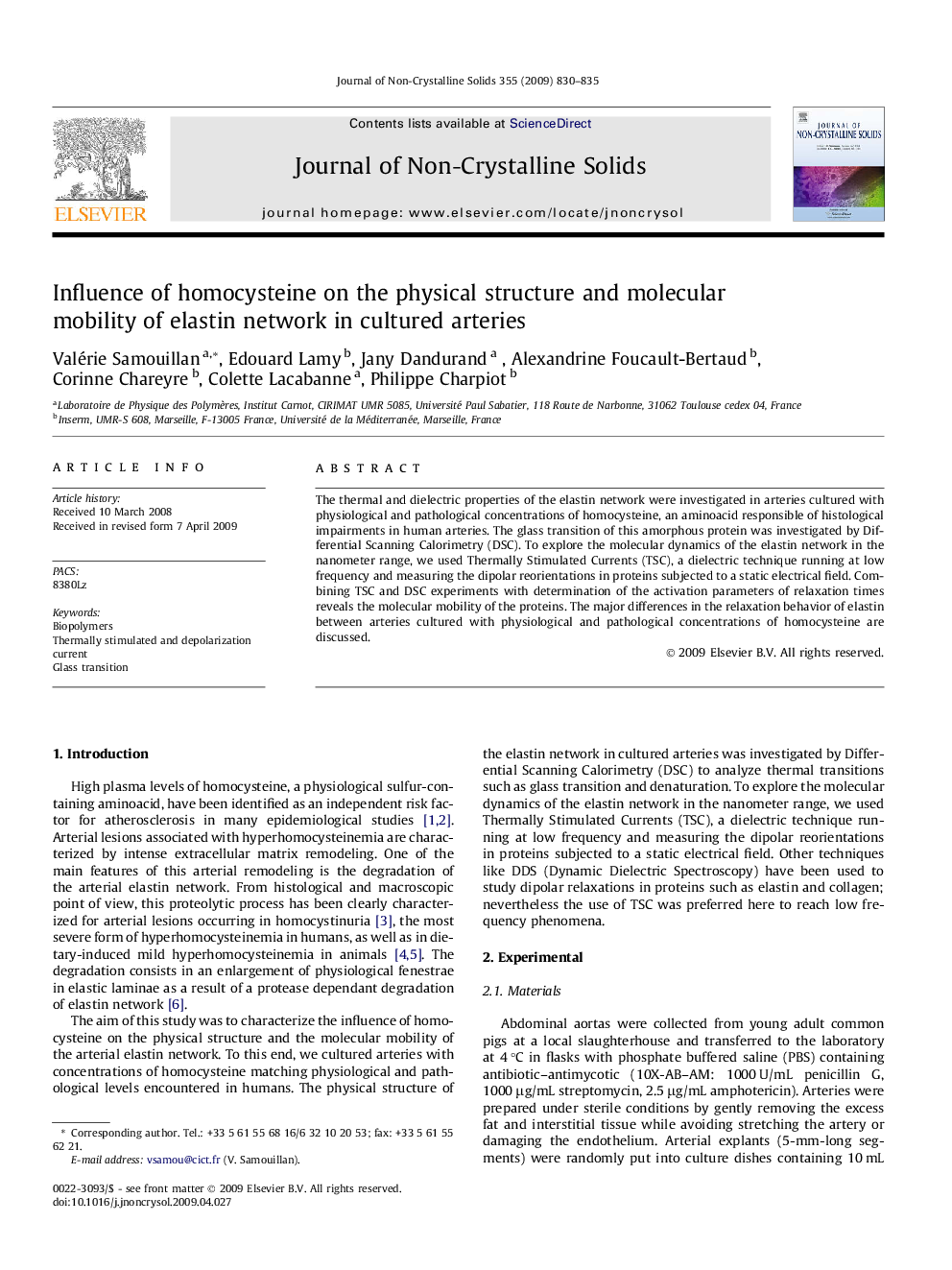| Article ID | Journal | Published Year | Pages | File Type |
|---|---|---|---|---|
| 1483486 | Journal of Non-Crystalline Solids | 2009 | 6 Pages |
Abstract
The thermal and dielectric properties of the elastin network were investigated in arteries cultured with physiological and pathological concentrations of homocysteine, an aminoacid responsible of histological impairments in human arteries. The glass transition of this amorphous protein was investigated by Differential Scanning Calorimetry (DSC). To explore the molecular dynamics of the elastin network in the nanometer range, we used Thermally Stimulated Currents (TSC), a dielectric technique running at low frequency and measuring the dipolar reorientations in proteins subjected to a static electrical field. Combining TSC and DSC experiments with determination of the activation parameters of relaxation times reveals the molecular mobility of the proteins. The major differences in the relaxation behavior of elastin between arteries cultured with physiological and pathological concentrations of homocysteine are discussed.
Related Topics
Physical Sciences and Engineering
Materials Science
Ceramics and Composites
Authors
Valérie Samouillan, Edouard Lamy, Jany Dandurand, Alexandrine Foucault-Bertaud, Corinne Chareyre, Colette Lacabanne, Philippe Charpiot,
